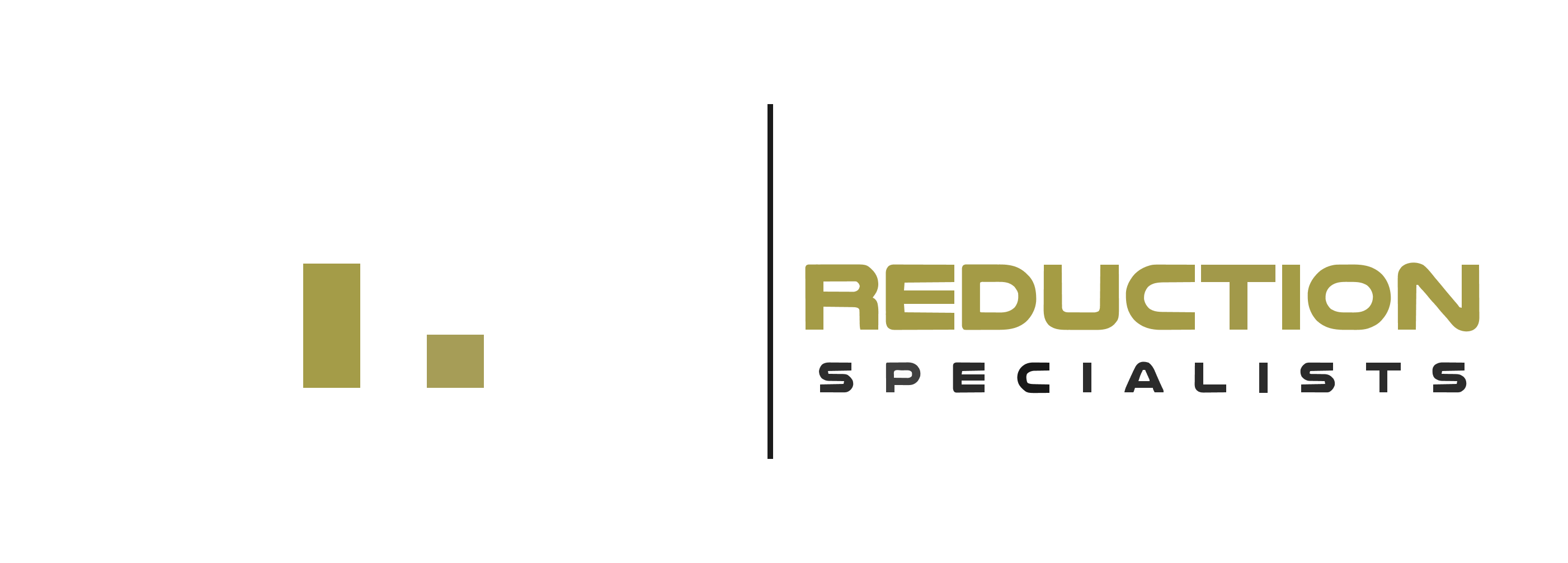7 Tax-Saving Strategies Using Cash Balance Plans for High-Income Professionals
Are you a high-income professional looking to maximize your tax savings while securing a comfortable retirement? Cash balance plans might be your golden ticket. These powerful retirement vehicles offer unique tax advantages that go far beyond traditional 401(k)s. In fact, cash balance plans allow you to contribute three to four times more than conventional retirement plans, all while enjoying significant tax deductions. In this comprehensive guide, we’ll unveil 7 strategic approaches to leverage cash balance plans for optimal tax savings. Whether you’re a successful business owner, physician, or legal professional, these strategies can help you: • Reduce your current tax burden substantially • Accelerate your retirement savings • Protect your assets from creditors • Combine with other retirement plans for maximum benefits Ready to transform your retirement planning while keeping more of your hard-earned money? Let’s dive into these game-changing strategies.
Key Takeaways:
- – Cash balance plans allow for significantly higher contribution limits compared to traditional retirement plans, enabling contributions up to three to four times more than conventional 401(k)s.
- – These qualified plans combine the best features of defined benefit plans and defined contribution plans, offering both tax advantages and retirement security.
- – Business owners and high-income earners can make substantial tax-deductible contributions while building retirement savings faster than with traditional retirement plans alone.
- – Cash balance plans can be strategically combined with other retirement plans like profit sharing plans to maximize tax benefits and retirement savings potential.
- – The plans offer protection for retirement assets while providing predictable benefits through a combination of pay credits and interest credits.
Understanding Cash Balance Plans
A cash balance plan is a unique type of defined benefit retirement plan that combines features of traditional pension plans and 401(k)s. It offers significant advantages for high-income professionals seeking to maximize their retirement savings while reducing their tax burden.
How Cash Balance Plans Work
These plans maintain hypothetical individual accounts for each participant, similar to 401(k)s. However, the key difference lies in how benefits accrue. Participants receive two types of credits: annual pay credits (a percentage of salary) and interest credits (a guaranteed rate of return).
The employer makes all contributions and bears the investment risk, ensuring participants receive their promised benefits regardless of market performance. This guaranteed return feature provides stability and predictability for retirement planning.
Key Features and Benefits
Cash balance plans offer substantial tax advantages through higher contribution limits compared to traditional retirement plans. For instance, while 401(k)s cap annual contributions at $22,500 (2023), cash balance plans allow much larger contributions based on age and income level.
These plans provide:
– Tax-deferred growth on investments
– Creditor protection for accumulated assets
– Guaranteed benefits at retirement
– Professional investment management
– Flexible contribution structures
Ideal Candidates
Cash balance plans work best for:
– High-income professionals and business owners
– Stable businesses with consistent cash flow
– Companies with owners significantly older than employees
– Firms seeking to maximize tax-deductible retirement contributions
???? Key Takeaway: Cash balance plans offer high-income professionals a powerful combination of guaranteed retirement benefits and significant tax advantages, allowing for larger contributions than traditional retirement plans while providing investment security.
Maximizing Tax Benefits Through Plan Design
The strategic design of your cash balance plan can significantly amplify your tax advantages. By carefully structuring contribution levels and participant classifications, you can optimize tax benefits while ensuring compliance with IRS regulations.
Customized Contribution Levels
Different participants can receive varying contribution amounts based on factors like age, compensation, and years of service. This flexibility allows business owners to maximize their own contributions while maintaining reasonable levels for employees. For instance, owners in their 50s or 60s can potentially contribute $200,000 or more annually, while younger staff members might receive smaller allocations.
Strategic Employee Classifications
Creating distinct participant classes helps optimize tax benefits. You can group employees based on job roles, tenure, or other legitimate business criteria. This approach enables you to design contribution formulas that work best for your organization while meeting non-discrimination requirements.
Integration with Other Retirement Plans
Combining your cash balance plan with a 401(k) or profit-sharing plan can enhance tax advantages. This dual-plan strategy often allows for higher overall contributions and greater flexibility in allocation. Many successful implementations utilize a 401(k) with profit sharing alongside the cash balance plan to maximize deductions.
Conservative Investment Approach
Adopting a conservative investment strategy helps maintain predictable funding requirements and tax deductions. Most plans target annual returns between 4-6%, reducing the risk of significant contribution fluctuations that could impact tax planning.
Annual Review and Adjustments
Regular plan reviews ensure optimal tax efficiency. Working with actuaries and financial advisors, you can adjust contribution levels and investment strategies based on business performance and tax objectives. This proactive approach helps maintain maximum tax benefits while ensuring long-term plan sustainability.
???? Key Takeaway: Strategic plan design with customized contribution levels, employee classifications, and integration with other retirement plans can maximize tax benefits while maintaining compliance with IRS regulations.
Strategy 1: Combining with Other Retirement Plans
Maximizing your retirement savings often requires a strategic approach that goes beyond a single plan. Cash balance plans can work harmoniously with other retirement vehicles to create a comprehensive tax-saving strategy.
401(k) Integration
Pairing a cash balance plan with a 401(k) creates a powerful combination. While your cash balance plan allows for substantial tax-deferred contributions, your 401(k) adds flexibility and additional tax benefits. You can contribute up to $23,000 (2024 limits) to your 401(k), plus catch-up contributions if you’re over 50.
Profit-Sharing Opportunities
Adding a profit-sharing component to your retirement strategy can further increase your tax-advantaged savings. This three-plan approach – cash balance, 401(k), and profit-sharing – can help high-income professionals potentially shelter over $400,000 annually from taxes, depending on age and income level.
IRA Coordination
While contributing to a cash balance plan, you can still maintain Individual Retirement Accounts (IRAs). However, your ability to deduct traditional IRA contributions may be limited based on your income and participation in employer-sponsored plans. Roth IRA contributions might be an alternative strategy, though income limits apply.
Timing Your Contributions
Coordinating contribution timing across multiple plans requires careful planning. Cash balance plan contributions must typically be made by the tax filing deadline, including extensions. However, 401(k) deferrals must be completed within the calendar year, while employer contributions can wait until the tax filing deadline.
???? Key Takeaway: Combining a cash balance plan with other retirement vehicles like 401(k)s and profit-sharing plans creates a comprehensive strategy that maximizes tax savings and retirement benefits for high-income professionals.
Strategy 2: Optimal Plan Timing and Implementation
Timing is crucial when implementing a cash balance plan to maximize tax benefits. The key is to align the plan’s establishment with your business’s financial cycles and tax planning needs.
Strategic Implementation Timeline
Start by establishing your plan before the end of the fiscal year to secure tax deductions for that period. Most businesses benefit from setting up their plans in Q3 or early Q4, allowing adequate time for proper documentation and regulatory compliance.
Funding Considerations
Your initial contribution must be made by the tax filing deadline, including extensions. For partnerships and S-corporations, this typically means September 15th of the following year, while C-corporations have until October 15th.
Coordination with Other Benefits
Synchronize your cash balance plan with existing retirement benefits. If you already have a 401(k), consider implementing both plans simultaneously to optimize contribution timing and maximize tax advantages across all retirement vehicles.
Annual Review Schedule
Establish a regular review cycle, preferably quarterly, to assess plan performance and make necessary adjustments. This proactive approach helps maintain compliance and ensures optimal tax benefits throughout the plan’s lifecycle.
???? Key Takeaway: Implement your cash balance plan strategically by aligning setup with fiscal year-end, coordinating with existing benefits, and maintaining regular reviews to maximize tax advantages and ensure compliance.
Strategy 3: Professional Practice Optimization
Professional practices like medical offices, law firms, and dental clinics can significantly benefit from cash balance plans through strategic optimization. Let’s explore how these professionals can maximize their tax advantages while securing their retirement future.
Tailored Contribution Structures
Medical practices and law firms can design contribution structures that align with their partnership hierarchy. Senior partners can receive higher contribution allocations, while junior partners and associates can have scaled contributions based on their compensation levels and years of service.
Employee Classification Benefits
Establish different benefit classes for various employee groups within your practice. This allows for flexible contribution rates while maintaining compliance with non-discrimination testing. For instance, physicians might receive higher contribution rates compared to administrative staff, creating a cost-effective approach to benefits.
Integration with Existing Benefits
Combine your cash balance plan with your practice’s current 401(k) or profit-sharing plans. This integration can help maximize total contributions while providing diverse retirement options for all staff members. A well-structured combination can allow key professionals to contribute up to $300,000 or more annually.
Tax-Efficient Income Management
Strategic implementation of cash balance plans can help manage practice income more effectively. By adjusting contribution levels based on annual practice performance, you can optimize tax deductions while maintaining stable cash flow for operations.
Risk Management Considerations
Professional practices should carefully evaluate their cash flow stability and long-term commitment capability. Consider implementing a conservative investment strategy to minimize funding volatility and ensure consistent plan performance.
???? Key Takeaway: Professional practices can optimize their tax benefits through cash balance plans by implementing tailored contribution structures, strategic employee classifications, and integration with existing retirement benefits while maintaining operational stability.
Strategy 4: Investment Management Approach
Managing investments within a cash balance plan requires a strategic approach that balances growth potential with risk management. Let’s explore the key aspects of this critical strategy.
Conservative Investment Philosophy
A conservative investment approach is essential for cash balance plans. Unlike 401(k)s, where participants bear investment risks, employers are responsible for meeting promised benefits. This typically means targeting annual returns between 4-6% to maintain stable contribution requirements.
Asset Allocation Strategy
The investment portfolio should focus on:
– High-quality bonds (50-70% allocation)
– Blue-chip stocks (20-30% allocation)
– Cash equivalents (10-20% allocation)
This balanced approach helps protect against market volatility while ensuring steady growth to meet plan obligations.
Professional Management Requirements
Working with qualified investment advisors is crucial for:
– Regular portfolio rebalancing
– Risk assessment and management
– Compliance with fiduciary responsibilities
– Performance monitoring and reporting
Risk Mitigation Techniques
Implementing proper risk controls involves:
– Diversification across asset classes
– Regular portfolio reviews
– Stress testing for market scenarios
– Maintaining adequate liquidity
???? Key Takeaway: A successful cash balance plan investment strategy combines conservative asset allocation with professional management to ensure stable returns while minimizing risk exposure for employers.
Strategy 5: Employee Benefit Structuring
Structuring employee benefits within a cash balance plan requires careful consideration to maximize tax advantages while maintaining fairness. Let’s explore how to effectively structure these benefits for optimal results.
Tiered Benefit Structure
Creating different benefit tiers allows you to allocate contributions based on employee classifications. This approach helps balance cost control with employee satisfaction. You can design varying contribution rates for different employee groups while ensuring compliance with non-discrimination rules.
Gateway Testing Requirements
To maintain plan qualification, your benefit structure must pass gateway testing requirements. This typically means providing a minimum contribution of 5% to non-highly compensated employees. Consider this threshold when designing your benefit structure to avoid compliance issues.
Age-Based Allocations
Implementing age-weighted benefit formulas can help maximize contributions for older employees while maintaining reasonable costs for younger staff. This approach naturally aligns with the tendency of older employees to focus more on retirement planning.
Integration with Other Benefits
Your cash balance plan should complement existing benefits like 401(k)s and health insurance. Consider how these benefits work together to create a comprehensive package that attracts and retains talent while optimizing tax advantages.
Cost Management Strategies
To keep costs manageable:
– Implement vesting schedules strategically
– Consider part-time employee eligibility carefully
– Design contribution formulas that align with business cash flow
– Monitor and adjust benefit levels based on company performance
???? Key Takeaway: Strategic employee benefit structuring in cash balance plans requires balancing tax advantages with fair employee treatment while ensuring compliance with regulatory requirements and maintaining cost efficiency.
Strategy 6: Compliance and Risk Management
Managing compliance and risk is crucial when implementing cash balance plans for tax savings. A well-structured approach ensures you maximize benefits while staying within regulatory bounds.
Regular Compliance Reviews
Conduct annual reviews of your cash balance plan to ensure it meets all IRS and DOL requirements. This includes checking contribution levels, testing for discrimination, and verifying participant communications are accurate and timely.
Risk Mitigation Strategies
Implement conservative investment strategies to maintain stable returns. Consider working with experienced investment advisors who understand the unique requirements of cash balance plans and can help balance risk with return objectives.
Documentation Requirements
Maintain detailed records of all plan-related decisions, contributions, and participant communications. This includes keeping copies of:
– Plan documents and amendments
– Annual actuarial certifications
– Investment policy statements
– Participant benefit statements
– Required government filings
Professional Support Team
Build a strong team of professionals to oversee your plan:
– An enrolled actuary for annual valuations
– ERISA attorney for legal compliance
– Third-party administrator for plan operations
– Investment advisor for portfolio management
???? Key Takeaway: Effective compliance and risk management in cash balance plans requires regular reviews, proper documentation, and a qualified professional team to ensure long-term success and tax benefits.
Strategy 7: Long-term Planning and Exit Strategies
Planning for the long-term success of your cash balance plan requires careful consideration of your exit strategy. This ensures a smooth transition when you’re ready to retire or make significant changes to your business structure.
Exit Strategy Options
A well-thought-out exit strategy helps protect your retirement savings and maximizes tax benefits. Consider selling your business, transitioning to new ownership, or gradually winding down operations. Each option has different implications for your cash balance plan.
Succession Planning
Develop a clear succession plan that outlines how your cash balance plan will be managed during ownership transitions. This includes identifying key personnel who will take over plan administration and ensuring they understand their fiduciary responsibilities.
Plan Termination Considerations
If you decide to terminate the plan, timing is crucial. Work with actuaries and financial advisors to determine the optimal termination date that maximizes tax advantages while meeting all regulatory requirements. Remember that plan termination requires careful documentation and communication with all participants.
Risk Management
Implement risk management strategies to protect your plan’s assets during transition periods. This might include adjusting investment allocations, reviewing insurance coverage, and ensuring compliance with all legal requirements.
???? Key Takeaway: Successful cash balance plan management requires comprehensive long-term planning and well-defined exit strategies, ensuring smooth transitions while maximizing tax benefits and protecting retirement assets.
Conclusion
As you navigate your financial future, implementing these cash balance plan strategies can significantly transform your retirement savings while providing substantial tax advantages. By combining these approaches with traditional retirement plans and working closely with financial advisors, you can create a robust retirement portfolio that maximizes your tax benefits. Remember, cash balance plans offer unique opportunities for high-income professionals to make significant tax-deductible contributions while building substantial retirement assets. Whether you’re a business owner, physician, or legal professional, these strategies can help you achieve your long-term financial goals while minimizing your current tax burden. Take the first step toward optimizing your retirement planning by consulting with a qualified financial advisor who specializes in cash balance plans. They can help you determine which strategies align best with your specific situation and guide you through the implementation process. The sooner you act, the more you can benefit from these powerful tax-saving opportunities.
FAQs
What happens to a cash balance plan if the business is sold or merged?
When a business is sold or merged, the cash balance plan can be terminated, frozen, or transferred to the new entity. Participants typically receive their vested benefits either as a lump sum or through a rollover to another qualified retirement plan.
How does market volatility affect cash balance plans compared to 401(k)s?
Unlike 401(k)s, cash balance plans provide guaranteed benefits regardless of market performance. The investment risk is borne by the employer, who must ensure sufficient funding to meet the promised benefits, offering participants more stability during market fluctuations.
Can medical professionals with multiple practice locations combine cash balance plans?
Yes, medical professionals with multiple practices can establish a combined cash balance plan if the businesses are related entities. This approach can maximize tax benefits and streamline administration while ensuring compliance with IRS regulations.
What are the withdrawal penalties and options before retirement age?
Early withdrawals before age 59½ typically incur a 10% penalty plus regular income taxes. However, exceptions exist for disability, death, or separation from service after age 55. Participants can also choose between lump-sum distributions or lifetime annuity payments.
How often can contribution limits be adjusted in a cash balance plan?
Contribution limits can be adjusted annually based on actuarial calculations, business profitability, and changes in workforce demographics. However, any modifications must be properly documented and comply with IRS non-discrimination testing requirements.
Is it possible to maintain both a cash balance plan and a 401(k) simultaneously?
Yes, businesses can maintain both plans simultaneously through a combination approach called “cross-testing.” This strategy allows for maximum retirement savings while providing different benefits to various employee groups within IRS compliance guidelines.







